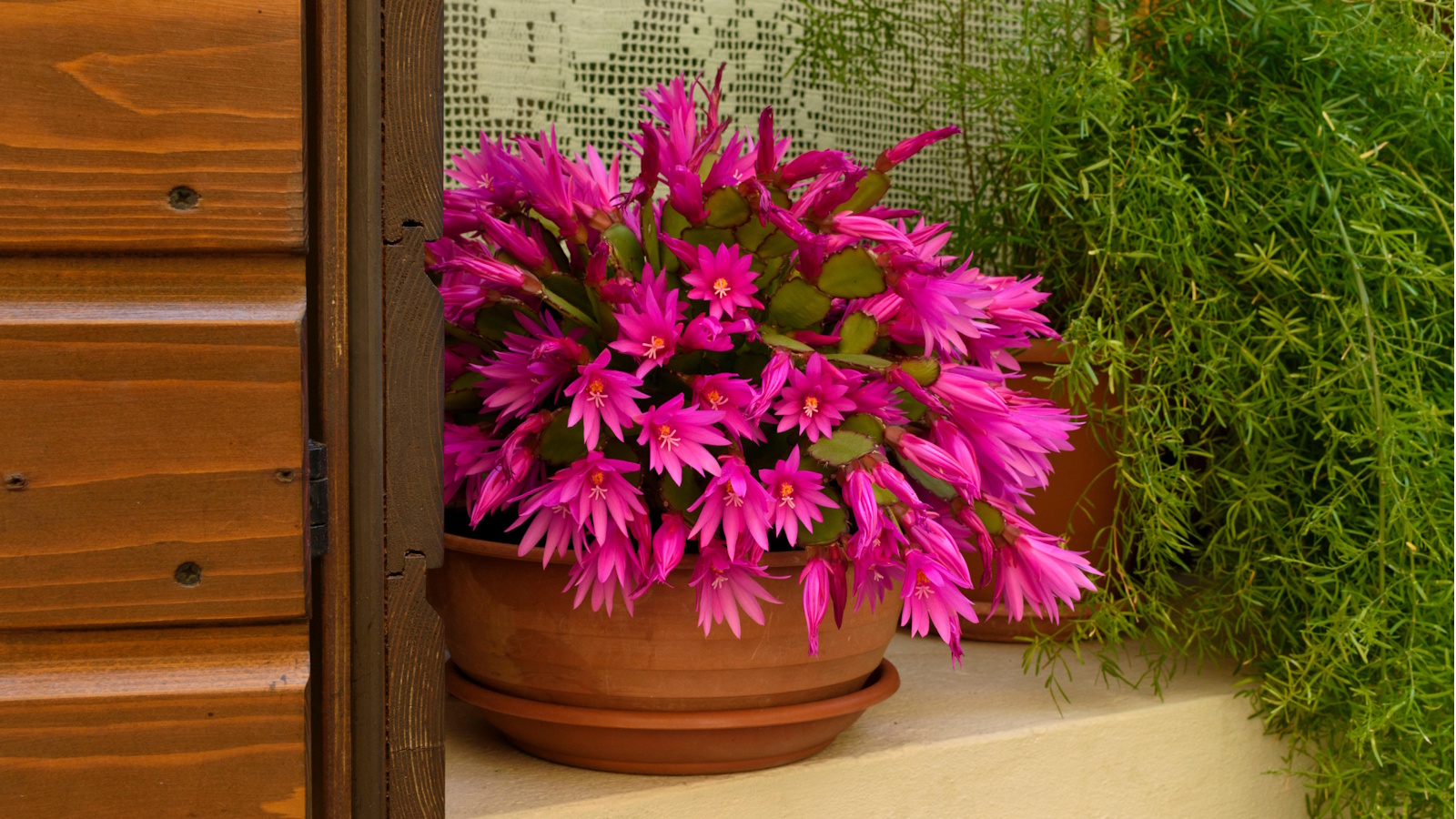
The Easter cactus adds a little seasonal spring color to your home with its gorgeous exotic looking blooms. The flowers come in an array of shades to choose from including various tones of pink and red, as well as pure white.
The correct name for Easter cactus is Rhipsalidopsis gaertneri. They are from a different family to the more well-known Thanksgiving and Christmas cacti, which are members of the Schlumbergera family - the similar appearance of these two plants often leaves plant parents confused over whether they have Thanksigiving cactus or Christmas cactus. However, Easter cacti are much easier to identify, specifically blooming from late winter into early spring. And although all three of these cacti varieties have similar leaves, you can also identify an Easter cactus by their round edges.
Learning to grow Easter cactus is straightforward, making it a great plant for beginners and experienced plant growers alike. Plus, their blooms are long-lasting, making them a worthwhile addition to your collection of indoor flowering plants. Here, plant experts share some top tips to keep in mind when caring for an Easter cactus.

5 expert tips for growing an Easter cactus
Once you get the hang of it, nailing how to grow Easter cactus is easy. Give your Easter cactus the conditions it likes and you will soon be rewarded with plenty of stunning flowers to celebrate the season, just like growing a Christmas cactus.
1. Place your Easter cactus somewhere bright
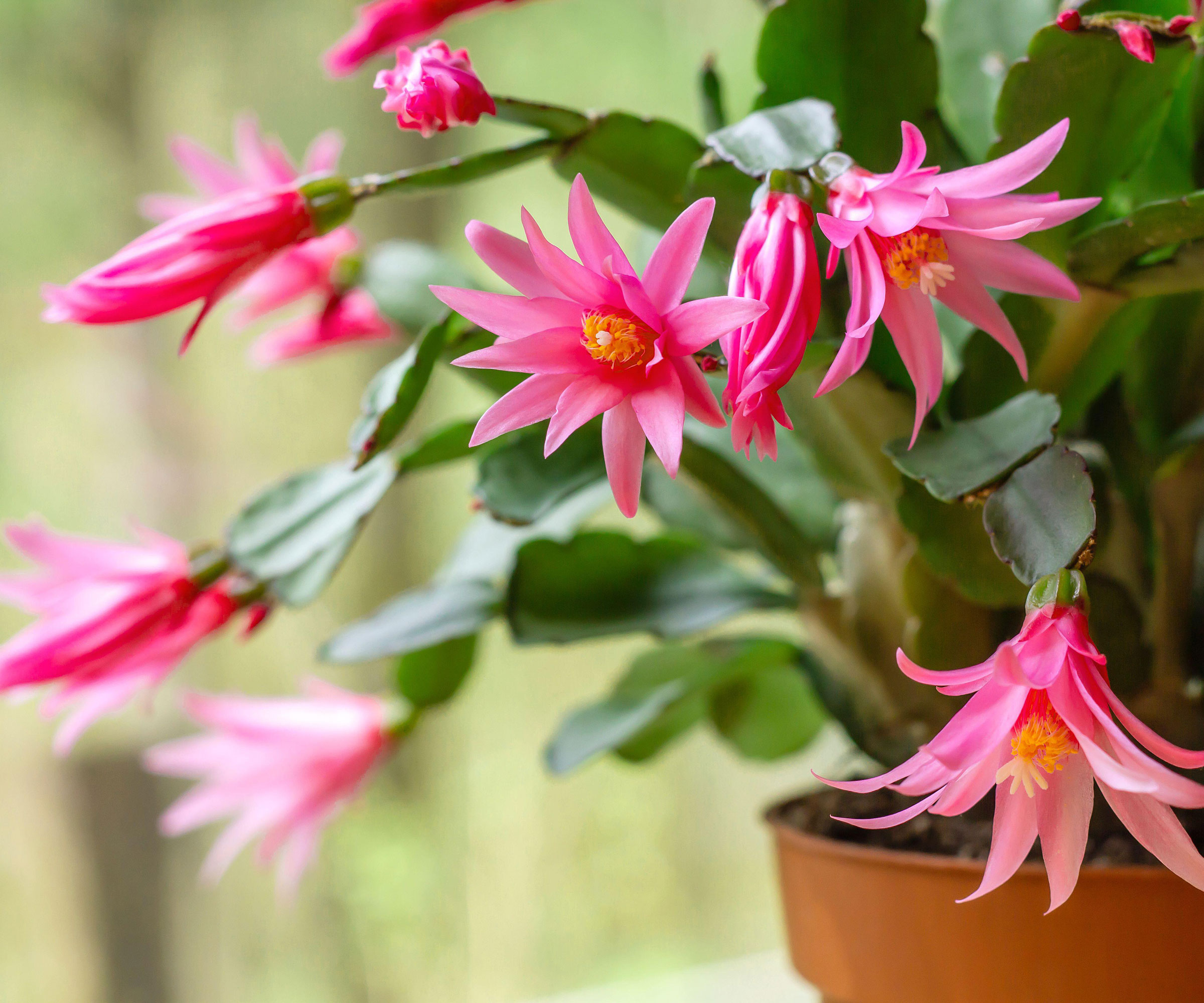
Find a place in your home for your Easter cactus where it will be exposed to plenty of bright, indirect sunlight. A lack of light is often the cause behind both an Easter cactus and Christmas cactus not blooming.
You should likewise avoid placing them somewhere in direct sunlight, however, as this may cause leaf scorch.
Easter cactus plants love a little humidity (they will make a good bathroom plant), so if the air in your home is dry and you don't have a humidifier try placing your plant on a pebble tray for plants, then add a little water to it. This will help to moisten the air around the plant through evaporation. Alternatively, try another method to increase humidity for indoor plants - like using this plant mister from Amazon.
Along the same lines, a room temperature around 64°F is ideal for these plants. Make sure there's also plenty of air circulation for your Easter cactus and keep it away from any drafts or heat sources.
This beautiful Easter cactus blooms bright, pink, red, or purple flowers. It arrives in a 4-inch decorative pot.
2. Allow your Easter cactus to dry out between watering
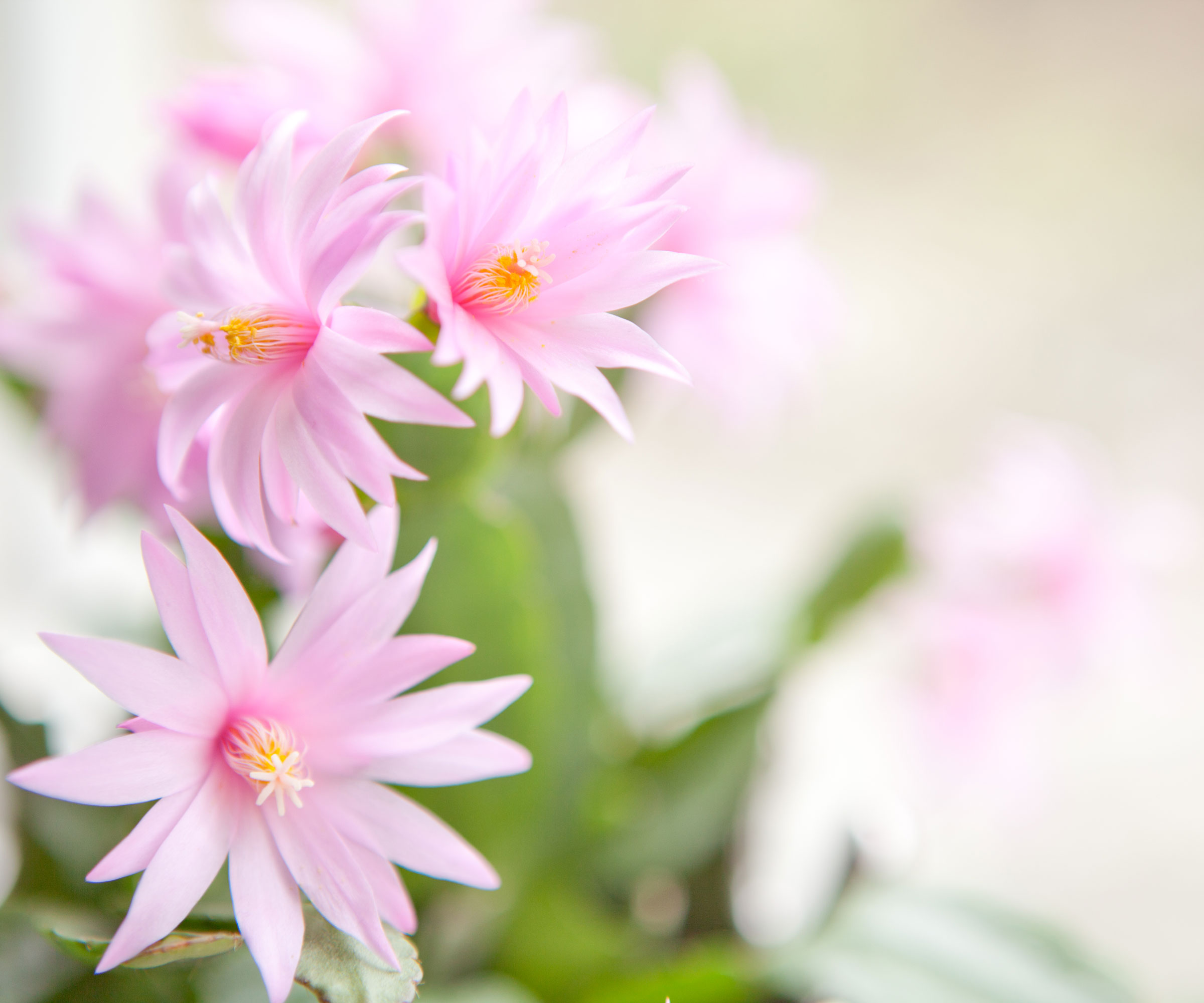
Easter cacti are a type of indoor succulent, so you only need to water them when the soil feels dry to touch. Once dry, water thoroughly until the water begins to drain from the bottom.
You should also check that the saucer they're standing in doesn't collect water - it could lead to houseplant root rot.
For this reason, indoor plant expert Vladan Nikolic suggests: 'Choose pots with functional drainage holes, so any excess water can run out of the holes.' These indoor planters from Amazon are a good choice.
'The exact watering schedule will depend on environmental factors, such as temperature, humidity, and airflow,' Vladan points out. 'To tell if it needs watering, take a chopstick and stick it all the way to the bottom of the pot. Pull it out and if there’s no soil stuck to the chopstick, your Easter cactus is thirsty and you should water it,' he advises.
Alternatively, you can use this soil moisture meter from Amazon to identify the moisture levels in your Easter cactus' soil.
3. Use a well-draining potting soil for your Easter cactus
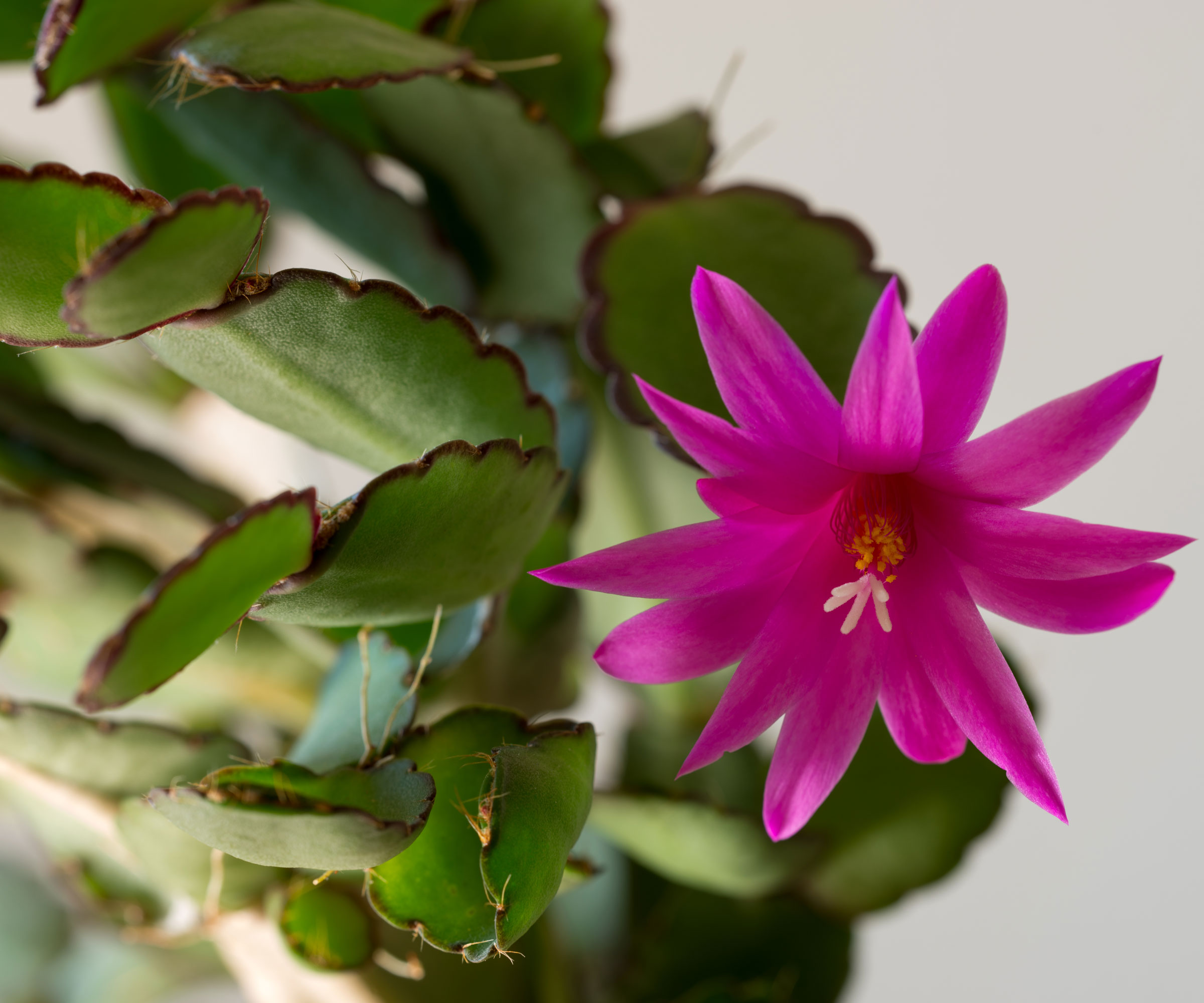
Getting the right soil type is a key element of how to grow Easter cactus. If they're going to thrive, Easter cactus like good quality porous soil that allows plenty of air to circulate around their roots, such as a cactus or succulent potting mix (from Amazon).
'Easter cactus plants have certain requirements when it comes to soil,' says Vladan. 'They like well-draining, aerated soil, which is important for root health.'
A good potting mix for Easter cacti should contain about two-thirds of store-bought potting compost and one-third of amendments, such as perlite or coco coir, to keep the soil light and airy. Using these ingredients, you can make your own succulent potting mix for your Easter cactus.
4. Fertilize your Easter cactus to replenish nutrients
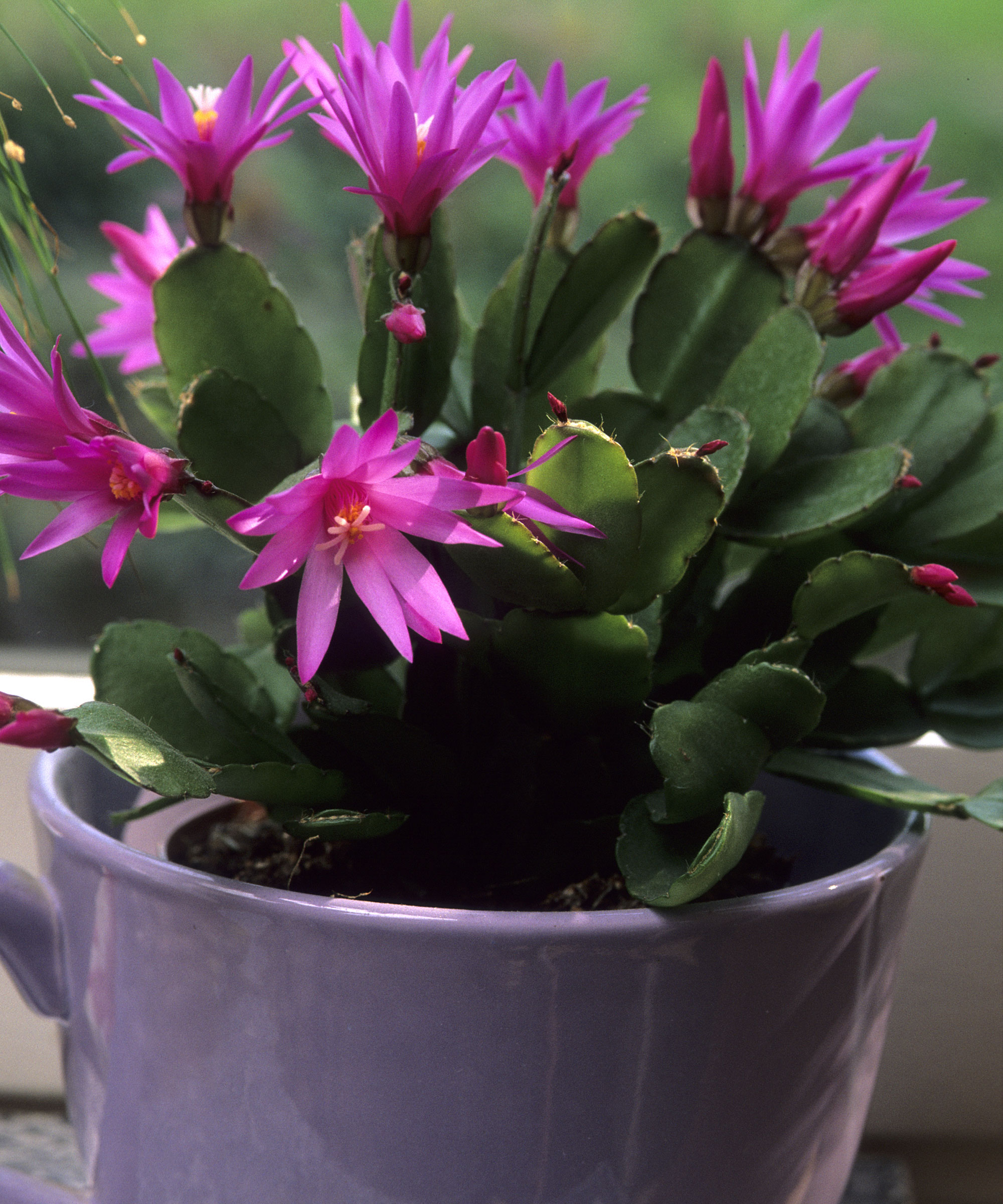
Easter cactus plants thrive with regular fertilization. Once the plant has finished blooming, apply a feed once a month until you need to prepare it for blooming again, at which point you stop fertilizing your plant.
'Apply a diluted liquid succulent fertilizer (from Amazon) every two weeks during the spring and summer months, then stop fertilizing in fall and winter,' says Lindsey Hyland, plant expert from Urban Organic Yield. 'Use a balanced fertilizer diluted to half strength once a month during the growing season, and do not fertilize during winter when the plant is dormant.'
You can also keep the soil topped up by refreshing the compost regularly to provide a fresh source of essential plant nutrients.
5. Provide your Easter cactus with a period of darkness before blooming

This beautiful plant is grown for its vibrant flowers, so it's essential to provide the Easter cactus with everything it needs in order for it to bloom profusely. Typically the Easter cactus flowers in late winter to early spring, and they require long nights and cool temperatures before blooming.
'Easter cactus require 12 hours of darkness a day and cool temperatures in order to flower,' says Vladan Nikolic. 'They bloom after approximately 8-12 weeks of short days, in late winter or early spring.'
This is the same method used to get a Christmas cactus to bloom. If the period of darkness is interrupted, even for short intervals, the plant might drop buds. It can also drop buds due to drafts or changes in temperature.
'The key components for getting Easter cactus plants to bloom is to give them enough darkness and to keep them in a stable environment,' says Vladan. 'This means making sure they are not exposed to any drastic environmental fluctuations.'
FAQs
Do you need to prune an Easter cactus?
Pruning a key element of how to grow an Easter cactus successfully, especially if you want more flowers. Deadheading indoor flowering plants can help your Easter cactus push out another round of blooms during its spring blooming period. Meanwhile after your Easter cactus finishes flowering in spring it's a good idea to prune it. You don't have to do this but it will help reblooming next year. Neatly snap off the uppermost leaf pad at the joint with your fingers or alternatively you can use essential pruning tools or even these sharp scissors from Walmart.
'When the flowering finishes, you can also prune your Easter cactus to encourage branching,' says indoor plant expert Vladan Nikolic. 'Use sharp pruning shears or a knife to cut the plant where two branch sections connect. Your plant will then produce 1-2 new shoots from the place where it was cut, which will promote branching.'
What are these bugs on my Easter cactus?
The Easter cactus is a relatively easy-going plant but sometimes it can be affected by common houseplant pests, such as spider mites and fungus gnats. Mealybugs and other scale insects can also trouble your Easter cactus. If you see cottony white masses on the cactus pads these are mealybugs, while scale forms a series of oval bumps. A weekly application of a homemade bug spray loaded with neem oil should help get rid of them.
Thanksgiving, Christmas, and Easter cacti are not the only flowering cacti you can grow in your home. Prickly pear is another popular cactus with blooms, which typically flowers into summer - perfect for in between the blooming period of the other plants. No matter which cacti or succulents you choose to grow, however, take care to avoid common succulent mistakes.







